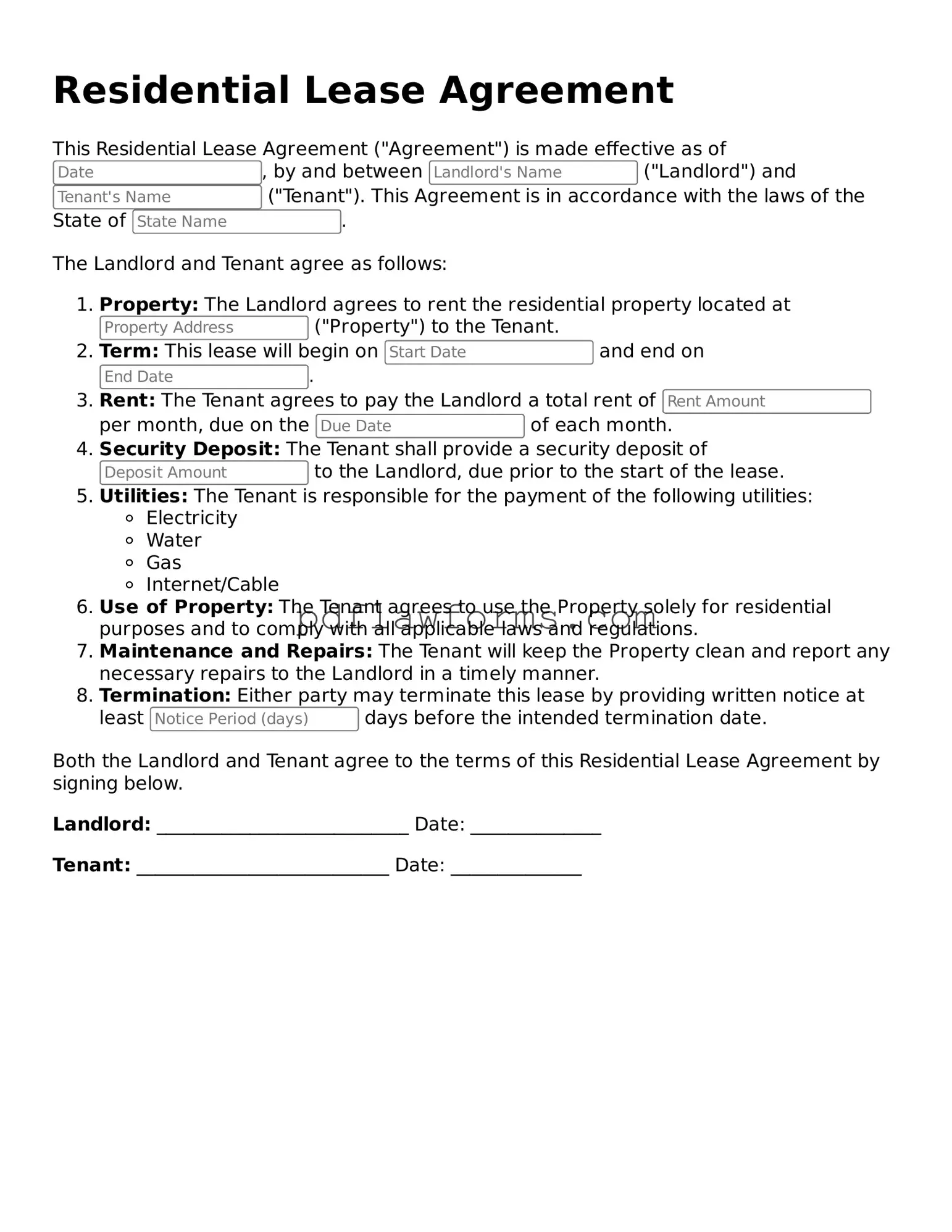When it comes to filling out a Residential Lease Agreement, many individuals make common mistakes that can lead to misunderstandings or even legal issues down the line. One of the most frequent errors is failing to read the entire document thoroughly. Many people skim through the lease, assuming they understand the terms. This can result in overlooking important clauses that affect their rights and responsibilities.
Another common mistake is not providing accurate personal information. This includes names, addresses, and contact details. If the information is incorrect, it can create confusion and complications later, especially if any disputes arise. Always double-check to ensure that all details are correct before submitting the lease.
Many individuals also neglect to clarify the terms of the lease, such as the duration and rent amount. For instance, failing to specify the start and end dates can lead to disputes about when the lease actually begins. Similarly, not clearly stating the rental amount or due dates can create misunderstandings between landlords and tenants.
Another mistake often made is skipping the section about security deposits. This part of the lease is crucial. Tenants should be aware of how much they are required to pay, the conditions under which it will be returned, and any deductions that may be taken. Ignoring these details can lead to frustration and conflict later on.
Additionally, individuals sometimes overlook the importance of understanding the rules regarding maintenance and repairs. A lease should clearly outline who is responsible for what. If these responsibilities are not clearly defined, it can lead to disputes over who should handle repairs or maintenance issues.
Lastly, many people fail to ask questions or seek clarification on any terms they do not understand. It’s essential to communicate openly with the landlord or property manager. If something is unclear, asking for clarification can prevent future problems and ensure that both parties are on the same page.
